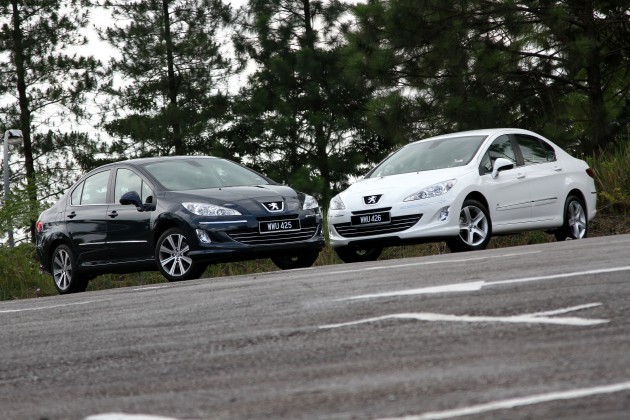
Say hello to the latest Pug in the pride, the 408. Designed exclusively for emerging markets like China and ours, this C-segment sedan will never see the light of day in Europe.
Here, it’s aimed at filling the void left by the 407, and though the replacement for the 407 is the 508, the latter does shift the presentation up price-wise. Which is where the 408 comes in – at RM125,888 for the Turbo and RM109,888 for the 2.0, things are kept along the pricing lines of the 407, and in the case of the normally-aspirated 2.0 version, it’s an even more cost effective offering.
Anthony and I took both the Turbo and 2.0 out for a run last week, and the short of it is that while they are cut from the same cloth, both cars are actually very different character-wise. Read on to find out what we think about the newest Pug.
Full story after the jump.
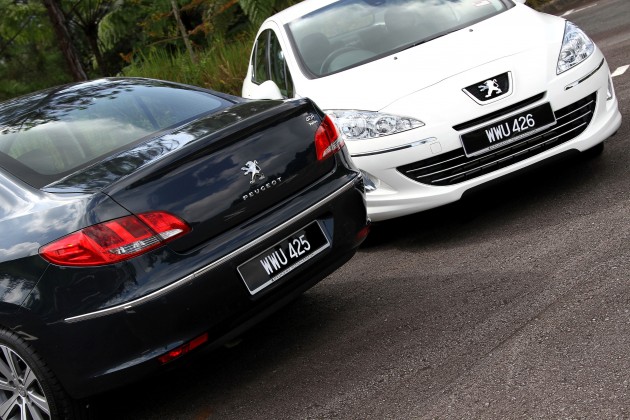
We’ve covered details about the car with our launch story from last month, but here’s a recap. Draped in Peugeot’s latest signature grille, which has been nipped and tucked to make it smaller than the outgoing models, the car features redesigned headlamps and bonnet combo to help it look sleeker, with a dash of athleticism to boot. The rear is reminiscent of its bigger sibling, the 508, but admittedly it is quite plain to look at.
The Turbo comes with a 225/45 R17 Continental Sport Contact 3 wrapped around eight-spoke 17-inch ‘Melbourne’ alloy wheels, which are sportier than the five-spoke ‘Rinjani’ wheels and 215/50 series Continental Max Contact MC5s worn by the NA.
Since this is a Peugeot, you’d expect it to have a lot of kit in its class, and it does. Essentially, the 408 Turbo and the non-turbo are one and the same. As mentioned earlier, both have the same exterior lines and share the same interior decorator, with only the choice of material inside offering differentiation.
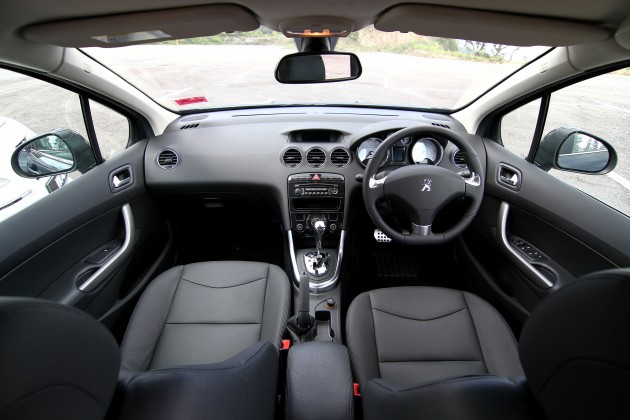
Equipment levels are also similar; you can find the same entertainment system, climate control and safety features in both cars. Being the more expensive version, naturally the Turbo has better specification.
The Turbo has premium leather seats, leather wrapped steering wheel with aluminium inserts, auto dimming rear view mirror, aluminium pedals and a rear centre armrest with two cup-holders. As for safety, the car gets driver and front passenger airbags, front and rear curtain airbags, electronic stability program (ESP) and anti-skid regulation (ASR).
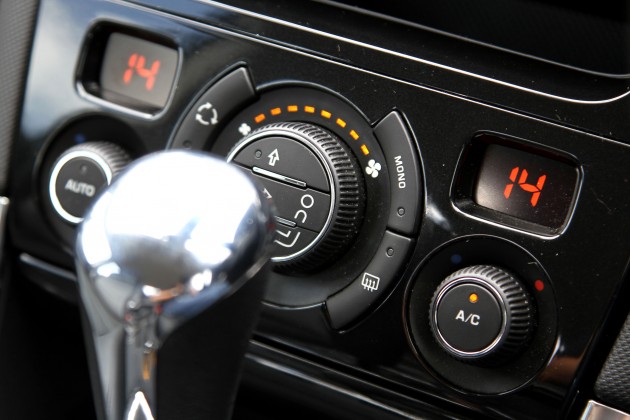 As for the 2.0, the seats are wrapped in fabric, the steering wheel
loses the aluminium inserts, and aside from the above kit unique to the
Turbo, there’s also less flash in the overall trim garnish.
As for the 2.0, the seats are wrapped in fabric, the steering wheel
loses the aluminium inserts, and aside from the above kit unique to the
Turbo, there’s also less flash in the overall trim garnish.In terms of space, there’s plenty at the back. There’s good legroom despite the driver’s seat is aligned with the B-pillar. The boot’s 562 litres of space gives you the option to put two children at the back or a golf bag horizontally. Side pockets inside the cargo hold also make it easier to put away smaller items.
Now, let’s talk numbers. For the Turbo, the engine is a 1.6 litre twin scroll turbo high pressure (THP) with direct petrol injection and VVT. On paper, the Prince engine produces 163 hp at 6,000 rpm and 240 Nm of torque at 1,400 rpm. The engine consumes 8.2 l/100km, measured on an EU combined drive cycle and emits 190 g/km of CO2. It meets Euro 5 regulations, just in case you want to know.
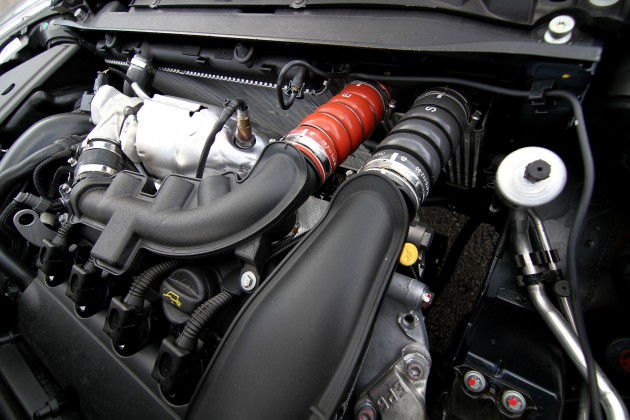 An AT6 six-speed automatic gearbox is partnered with the engine to
transfer power into the front wheels. The turbocharged sedan goes from
0-100 km/h in 9.2 seconds and is capable of speeds of up to 215 km/h, a
speed that is limited by the ECU.
An AT6 six-speed automatic gearbox is partnered with the engine to
transfer power into the front wheels. The turbocharged sedan goes from
0-100 km/h in 9.2 seconds and is capable of speeds of up to 215 km/h, a
speed that is limited by the ECU.Meanwhile, the 408 2.0 is powered by the EW10A+ normally-aspirated four-cylinder 2.0 litre unit, which is good for 145 hp at 6,000 rpm and 200 Nm of torque at 4,000 rpm. It’s paired with an AT8 four-speed auto adaptive gearbox, which features a new torque converter as part of its revision. Performance-wise, the 2.0 litre has a 195 km/h top speed and a 0-100 km/h time of 12.5 seconds.
As far as kit goes, the Pug is value for money, especially the Turbo – the car with almost the same spec in the same segment is the Volkswagen Jetta, which is priced just shy of RM150,000. Of course, nothing like driving it to get the lowdown, so here it is.
Chris’ take on the twosome:
First notes on the Turbo, which I spent most of the time in. Truth be told, this car does not feel quick off the line. The first two gears slush around before locking in the third – or around 60 km/h – before it starts to build serious momentum. You can imagine this as a Saturn V taking off; there’s a lot of noise and the lift-off is labourious. Then, once it starts to break off from gravity, it shoots to the beyond like a rocket that it is.
The turbocharged car feels a little like that as well. Once past 60 km/h on the speedo, you’ll quickly find yourself in a region that pooh-poohs the national speed tolerance. And there’s enough fire left in the Pug to put behind the car in front of you, proof that the 408 works better in the mid-ranges.
The steering feels meaty and confident at high speeds, no doubt tightened by the electro-hydraulic steering. In fact, it is not just at high speeds that the steering feels loaded. Fire up the engine and you’ll find higher levels of resistance from the steering; it just wants the wheels pointed north. Which of course requires effort, whether you’re navigating through the parking lot or a series of B-road curves.
Without a shadow of doubt, the car is stable. In the front, you’ll find MacPherson-type struts and an anti-roll bar. Peugeot has made the rear slightly more complex with its ‘deformable U-shaped cross member located by two arms and a hollow anti-roll bar’. Together, they give the car a firmness that you won’t normally find in C-segment cars, but in sports and performance cars.
So, you’ll feel the road connecting with your backside and in some cases, your spine. Nevertheless, the springs and dampers filter a lot of the other small inconsistencies of the road, letting you know only the big ones. Like the pothole that I could have avoided, if I put more angle into the steering.
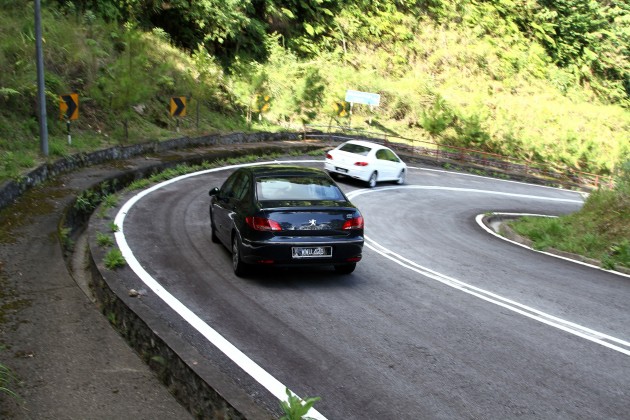 Through fast sweeping bends, the 408 roots itself to the tarmac
gathering every piece of grip it can find to keep you on the black. Even
through a worrying series of tight corners, the Pug heroically tracks
through all like an out of control mine cart, sometimes just missing the
apex by inches. In spite of its tall-ish design, it never really rolls
and pitches too much.
Through fast sweeping bends, the 408 roots itself to the tarmac
gathering every piece of grip it can find to keep you on the black. Even
through a worrying series of tight corners, the Pug heroically tracks
through all like an out of control mine cart, sometimes just missing the
apex by inches. In spite of its tall-ish design, it never really rolls
and pitches too much.Clearly, this car is aimed at the more performance-minded driver. Peugeot has already souped up the engine, steering and suspension system that gives the 408 Turbo a little more punch over its same-class competitors. Mix in the fact that it gives more kit than the rest and you have a car that is certainly a bargain.
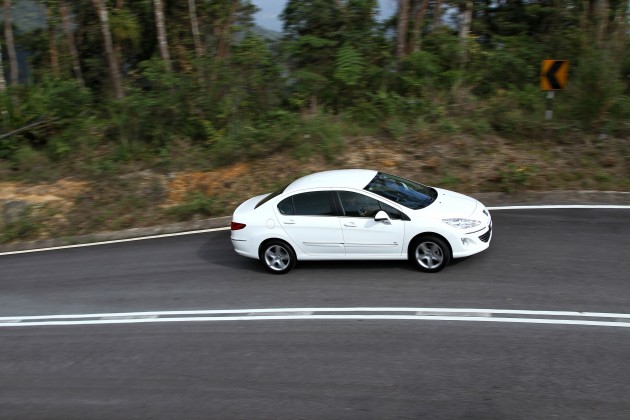
As for the normally-aspirated 408, if the Turbo is Mr Hyde, then the 2.0 would be Dr Jekyll. While both these cars ride on the same platform, have the same shape and share the same interior, they’re really two different cars.
Jumping in from the turbo, the first thing I noticed is the steering. The grip is skinnier than the turbo car and there are no chrome inserts on the thumb grip. It also feels light, compliant and desensitised, so you can manoeuvre through parking lots without breaking a sweat.
Power needs to be coaxed out of the NA car and selecting the gears manually will not help much, because it will self-shift when it reaches its threshold. This car will teach you patience, especially when there’s a hill to climb. I did not take it on a long and straight road, so I don’t know if it cruises well.
The chassis is also dialled to a more comfortable setting. Yes, there is a bit of roll to deal with. Then again, this is a different car. So, if you’re looking for an athletic 408, take the Turbo, because the 2.0 is meant for a relaxed, laidback drive.
Anthony’s view on the duality:
Usually, there’s not that dramatic a differentiation with variants, but here’s a bit of an exception, with the two cars offering enough variation that it feels like two sets of people worked on them.
If it’s pace you’re after, the Turbo, as expected, gets the vote. It’s certainly brisk enough, once you get past the initial lag off the mark, and the car actually handles quite well when pushed, with far better grip values than I expected there to be.
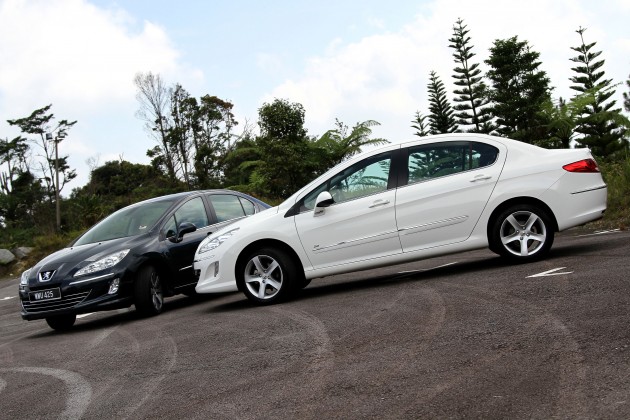
The steering is heavy though, and not particularly pleasant at low speed in terms of manoeuvrability, especially doing three pointers. Its weighting becomes even more noticeable when you come in from the 2.0, which sits at the other end of the spectrum.
Actually, I ended up liking the easier presentation offered by the 2.0’s steering (as well as its ergonomics – the inserts on the Turbo’s wheel may look spiffier, but to the touch I liked the conventional feel of leather better). There’s no real feel and the weight is threadbare, for want of a better word, which means that every nudge feels like it’d unsettle the car.
Once you stop attempting to be ham-fisted with it though, pushing the car through measured input – and trust beyond what it’s telling you – reveals that the NA’s handling is pretty neat and tidy. Granted, the Turbo’s overall presentation is inherently tauter, but the 2.0 offers plenty of mechanical grip, as the return trip from photography on the Karak highway showed.
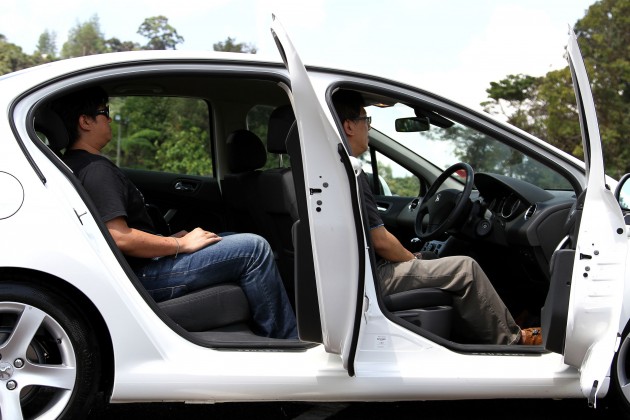
Pacy even, the 2.0, though only if you don’t ask too much of it – its lack of puff shows up when attempting hilly terrain (cue Genting) at speed; the lump is happy when humming, but trim speed off for corners and the impetus to regain propulsion becomes a slow-moving affair. Still, there’s little to complain about in urban surroundings.
No surprises from the NA’s four-speeder, even with the revisions – it’s a tireless worker and the spread covers movement well enough, albeit tinged with a discernible transmission whine off-throttle. Still, as the 308 Turbo showed when it first arrived with a four and then moved on to a six-speed unit, there’s no denying the improved scope and transition aspects of the extra ratios. Which is why the Turbo, equipped with the six-speeder, feels silkier in movement, and not just as a result of its perkier mill.
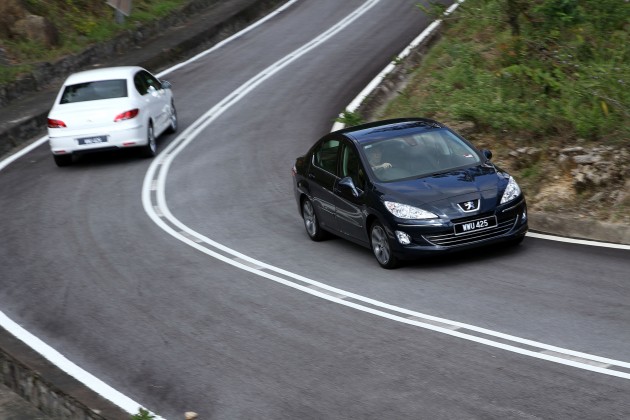
Points for overall comfort; I preferred the softer ride of the 2.0 (surely a sign of age!), and while Pug seats and I haven’t always agreed on how we should do the cha-cha, there was less of an issue than before here. Good support levels too at the front, the firmness carrying over to the rear bench. Meanwhile, boot space is impressive, with ample depth, as I found out when I had to stretch in to retrieve my set of keys that had fallen out of the bag.
In all, it’s an able offering, the 408. Not the flashiest thing around, but stoic definitely has its moments. On paper, the Turbo offers plenty of value, but I quite liked the straight-up, no frills presentation the 2.0 had, surprisingly over that of its turbo sibling – while a bit rough around the edges (mostly from the workings of the transmission), its reserved character has a quiet charm about it. Stranger things have happened.
http://paultan.org/2012/06/19/driven-peugeot-408-turbo-and-408-2-0/


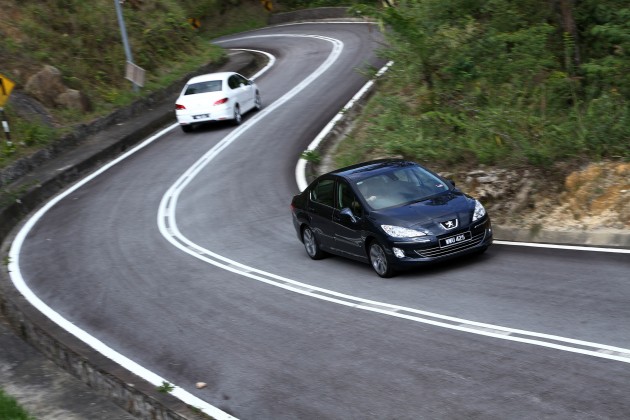
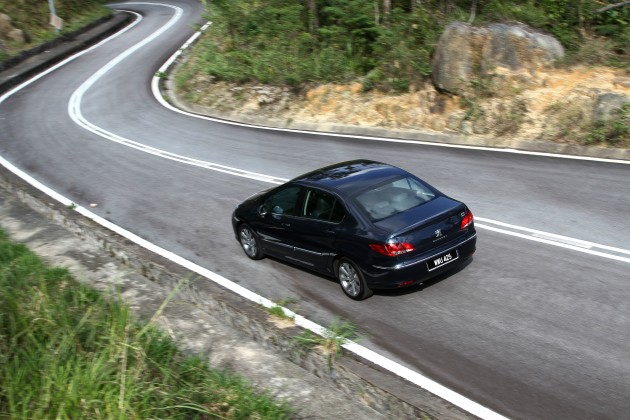
No comments:
Post a Comment